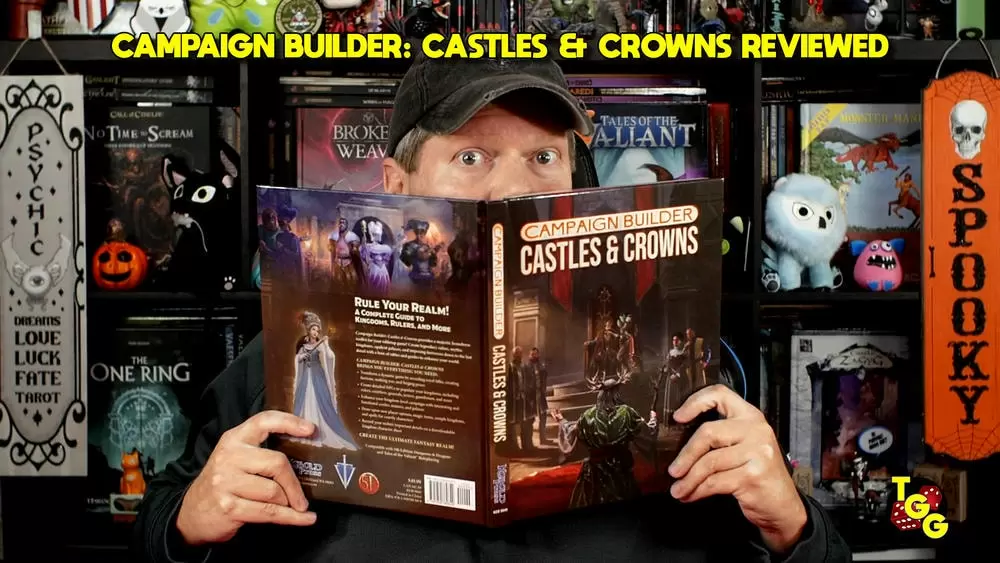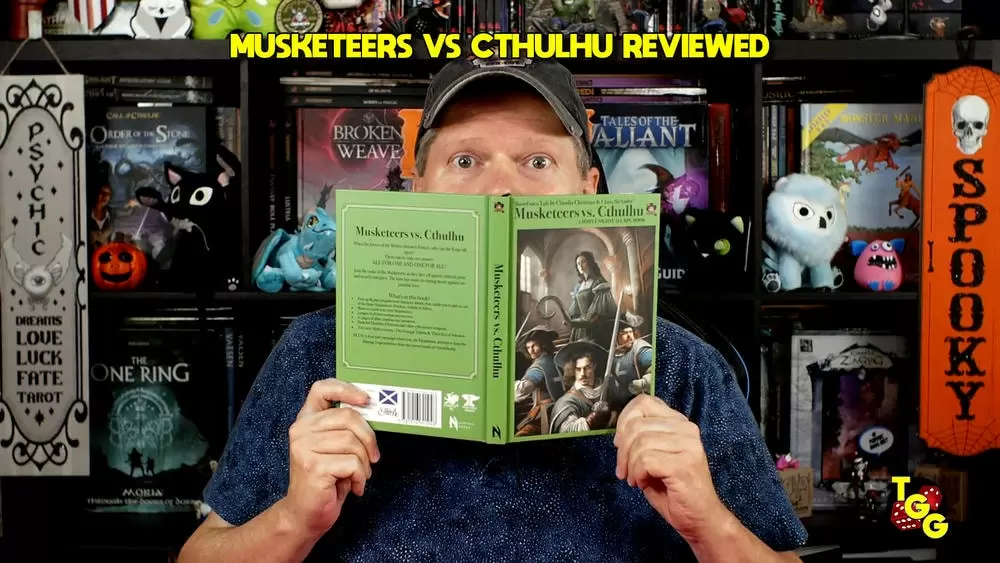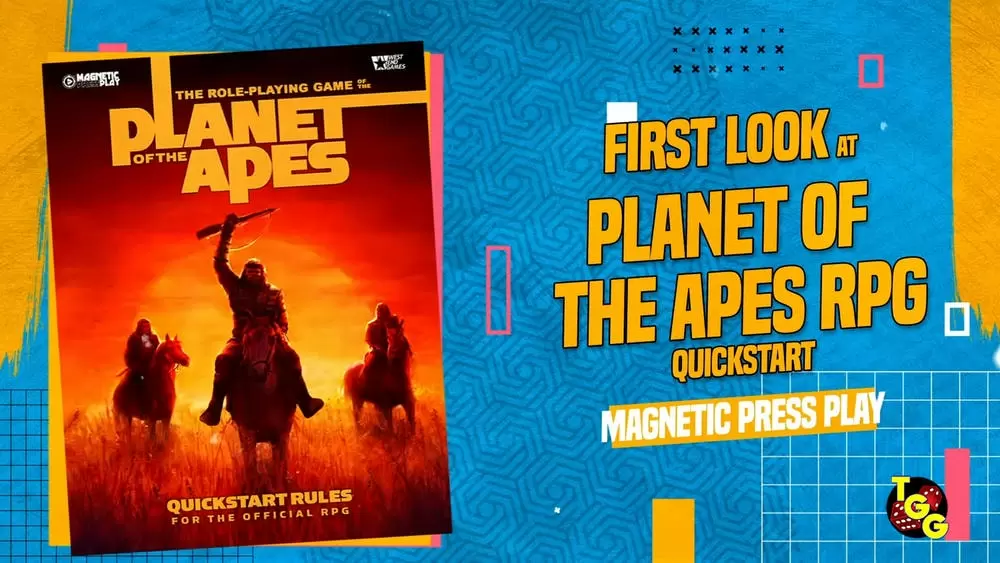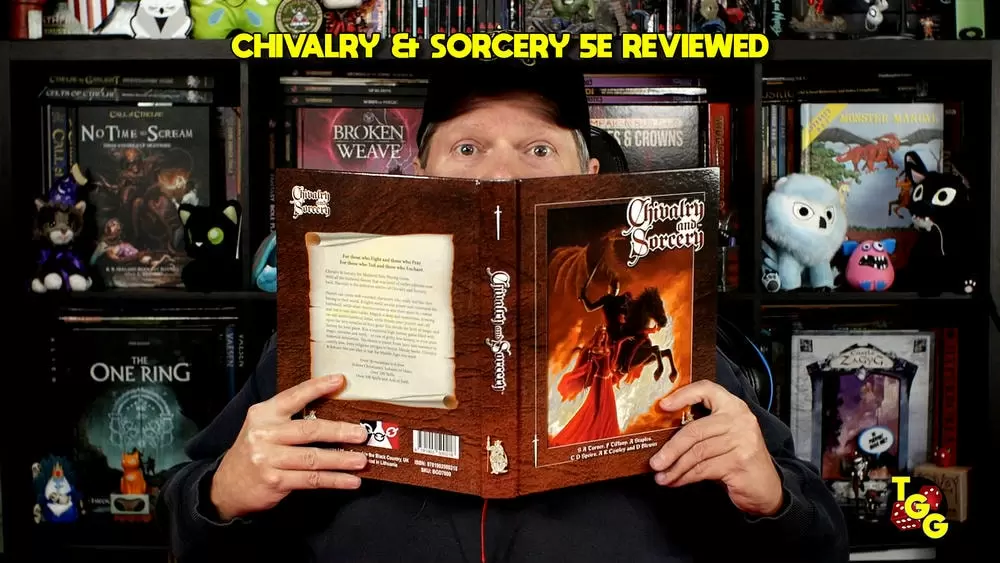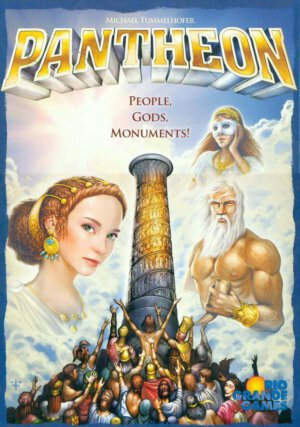
Publisher: Rio Grande (Hans im Glück)
Designer: Bernd Brunnhofer
Artist: Franz Vohwinkel
Year: 2011
Players: Two to four players
Ages: 13+
Playing Time: 60 – 90 Minutes
Genre: Set collecting and hand management Eurogame
MSRP: $39.95
Every once in a while I get to play a title that reminds me some Euro games are fun. Pantheon is such a game and came along just when I was starting to think that I could only enjoy the monster American style games I’ve grown to love.
Upon opening the box you’ll come across a plethora of game components. All of them are very good quality and have some excellent artwork. It even includes a nice cloth drawstring bag, which I haven’t seen in a game in a while.
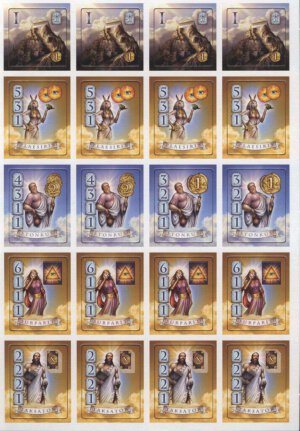
The rules are a bit daunting at first. It wasn’t until I actually sat down and played a game by myself that it all clicked. It takes a few minutes to set up, and then you will begin the first epoch by drawing one of the eight civilization cards. You place the wooden temple at the starting location of the civilization on the board, and pull booty tiles from the bag to place in marked locations around the temple.
You randomly draw a number of god tiles based on the number of players. These are placed across the top of the board to be available for players to gain by offering the appropriate sacrifice. Each player receives four feet and three column tokens in their color. These enable movement around the board, and you will need to purchase additional feet and columns to extend your reach.
Players also start with five cards. The cards are critical in the beginning but you can lessen their importance as the game goes on. The cards will either contain one of the four sacrifice suits (gifts, priest, dancer, temple), a movement card, or coins. The sacrifice cards are the most plentiful by far, and by collecting sets of these cards you can trade them in to gain the god tiles.
There are ten different gods in the god tiles that you can gain during the game. Each one will provide you a certain benefit and these effects are cumulative. So if you get two Vinthrad (looks like Thor to me) tiles, you will gain a free movement point for each one.
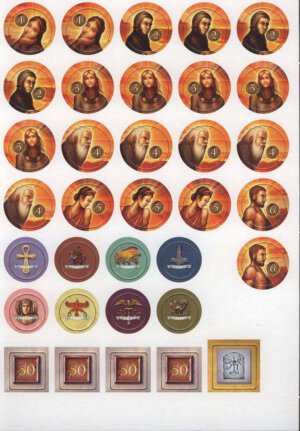
You may instead choose a buy action. You can spend your coins to gain extra feet, columns, sacrifice tiles which replace sacrifice cards and do not get discarded, or even buy movement points.
You can choose to gain a god tile by discarding the right amount of cards or using tiles. If you gain a god tile you immediately score a number of victory points matching the epoch you are in.
Finally, you can choose to draw three cards.
An epoch continues until a player grabs the last booty tile off the board, or gets the last available god tile. At which point you grab up all of your feet tokens, a new civilization is drawn, new gods come out, and new booty tokens. If it is after the third epoch, you score for columns and any minor god tokens you’ve managed to pick up. The same happens after the sixth epoch, with the difference being that the game ends after the final scoring. The player with the highest score wins.
The first turn takes the greatest portion of time in the game. You really have no resources and have to spend some time planning a strategy to execute for the rest of the game. After the first turn the game speeds up turn 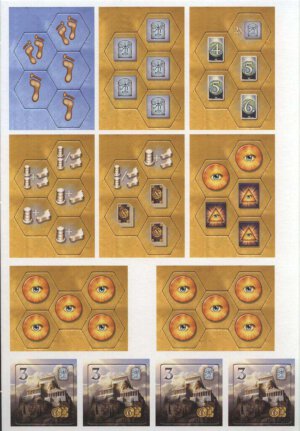
I was able to teach this game easily by simply running through the first epoch explaining as I went. By the second epoch, everyone knew how to play and were figuring out their own strategies.
There is a lot here that I haven’t touched on. The game has different strategies you can pursue that will change depending upon the bonuses you get, the cards you draw, the civilizations that come up, and the gods you manage to get. The game is deep and seems complex but really isn’t. It has loads of replayability, and plenty of chances to come from behind.
I liked this game a lot. It is fun, full of options, and one of those games that encourages you to try different strategies. I thought for sure that my strategy of getting several level four sacrifice tiles, so that I could buy a new god every turn was unbeatable. I came in last place that game, so I think it needs some refinement.
Again, the rules complicate things, but if you play the game and go through the rules it all becomes clear.
[rwp-review id=”0″]
- A Dungeon Delve for Kids?: A Review of Dungeon! - Oct 24, 2022
- Better, Stronger, Faster | Descent: Journeys in the Dark Second Edition Reviewed - Oct 23, 2022
- Your Planet is Doomed!: Invasion from Outer Space Reviewed - Oct 22, 2022



